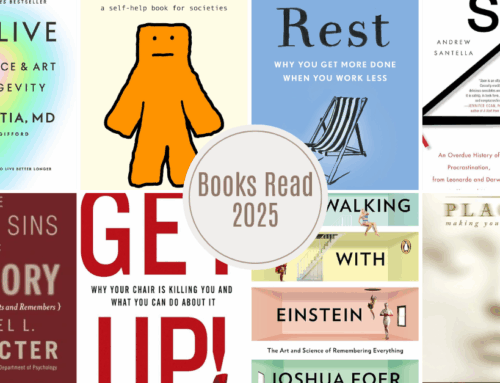 Moonwalking with Einstein: The Art and Science of Remembering Everything by Joshua Foer
Moonwalking with Einstein: The Art and Science of Remembering Everything by Joshua Foer
My rating: 4 of 5 stars
I picked up Moonwalking with Einstein out of a deeply personal need—one that many knowledge workers will relate to. When I was growing into senior leadership roles, managing large teams as VP, I often struggled to hold on to all the tasks I’d committed to. That raised uncomfortable questions: “Am I not serious about my work?” and “Is there something wrong with my memory?”. After adopting the GTD system, I made peace with the idea that memory isn’t meant to store work—it’s meant to process it. Writing things down became essential. But when I took up playing bridge, I was told I had to remember suits bid and cards discarded—something that couldn’t be written down mid-play. That challenge led me to seek out books on memory, which brought me to Joshua Foer.
The book blends neuroscience, history, psychology, and storytelling into a rich narrative that answers my central question: How do bridge champions do what they do? Over time, they build thousands of familiar patterns, allowing them to recognize and recall entire bidding sequences or card distributions effortlessly. The only way to build this kind of cognitive strength? Practice, practice, and more practice, and no memory tricks!
Though it’s not a step-by-step self-help manual, the book showcases practical techniques like chunking, memory palaces, and the value of deliberate practice. The book covers a fascinating range:
👉The cultural shift from oral to written memory
👉The future of memory in a digital world
👉How expertise is deeply tied to memory
👉OK plateau, the stage where most people stop improving and how to go beyond
👉And of course the memory techniques that memory champions use.
Foer’s writing is accessible and entertaining. Even as he dives deep into neuroscience and history, the book remains light and vivid, filled with scenes, characters, and clever analogies. He begins as a novice in memory techniques and ends with personal triumph—but never oversells the art. Instead, he shares his journey with humility and insight.
One of the stories—about remembering a to-do list using mnemonic techniques—was downright ridiculous, though admittedly entertaining. A to-do list is a beast that changes shape faster than an amoeba. Trying to manage it through a memory palace? That’s a fast track to mental fatigue. You’ll spend more time updating your palace than getting things done.
Who should read this? Anyone in knowledge work. But truly, anyone curious about how their mind works will find value here. It’s entertaining for casual readers and rich with insight for serious learners.
This isn’t just a book about memory—it’s a book about human potential, learning limits, and the extraordinary capacity hiding in plain sight within us all.


